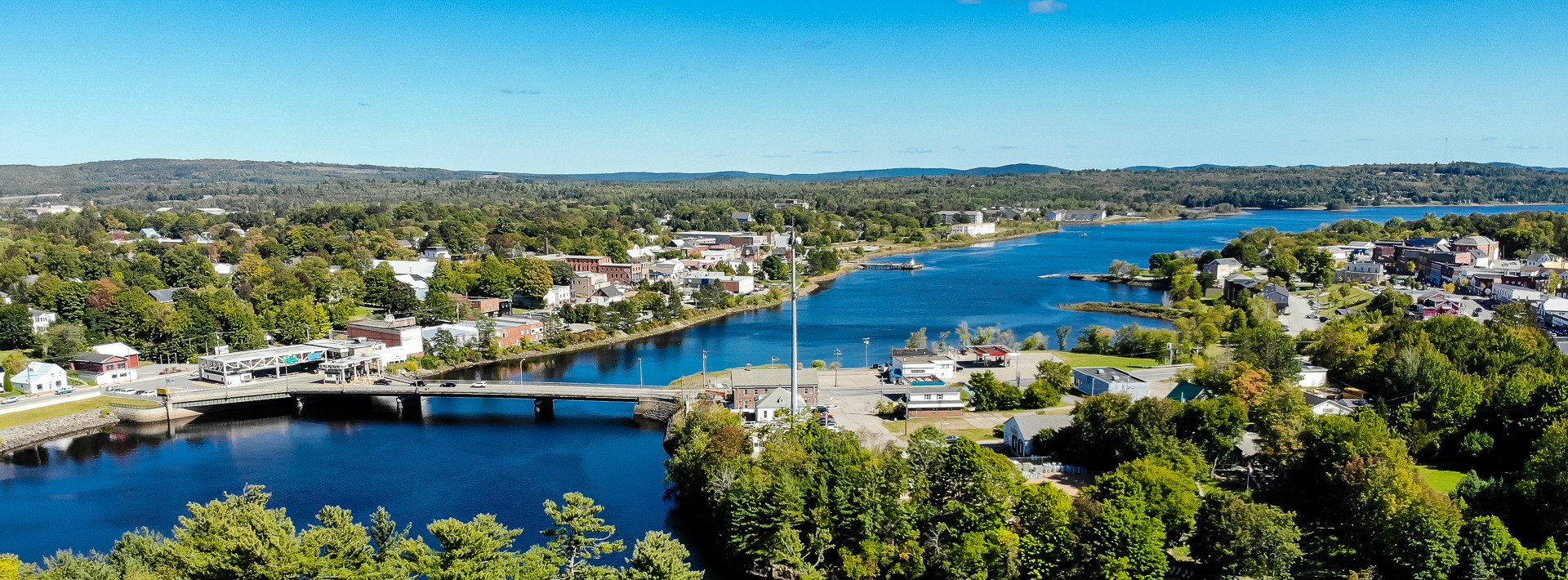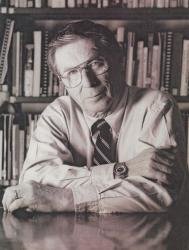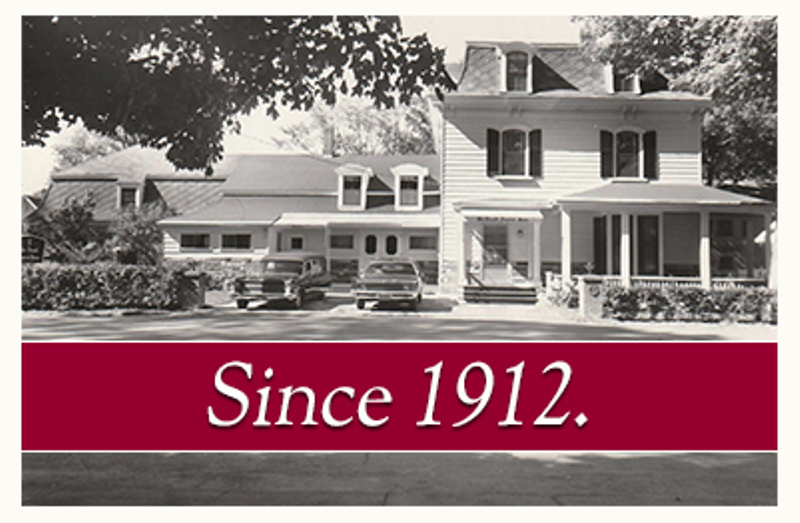

Obituary
Obituary of John M. Anderson
Dr. John Anderson—university president, marine research director, visionary conservationist of the North Atlantic Salmon, dashing ski instructor and proud husband, father, grandfather and great grandfather—died Thursday, March 24, 2011 at home in St. Andrews New Brunswick. He was 84 years old. Embracing the philosophy that people should always do the type of work and learning that they like to do, Dr. Anderson again and again pursued new challenges, from being a high school drop out, to research scientist, university professor, and president of one of the oldest public universities in North America, the University of New Brunswick. A native of Toronto, Dr. Anderson was the city boy who in 1976 declared himself to be “in love with small towns.” He was instrumental in all three of the major research and conservation institutions in St. Andrews N.B., serving as Director of the Biological Station, one of the Canada’s top marine biology research facilities; co-founder of the Huntsman Marine Sciences Centre, which brings universities and government together in research efforts; and the Atlantic Salmon Federation’s vice president of operations. Dr. Anderson was born on Sept. 3, 1926, the first son of the late Murray and Eleanor Anderson. He was also predeceased by his brother Ross. He is survived by his second wife Sylvia (Richard), his devoted caregiver during his illness of recent years; his brother George; his six children, Nancy [Hannah] (Brian Bedard), Suzanne (David Smith), Peter (Karen) Kathy (Kirk Mitchell), Tanya and Traci (Greg Morrison); by nine grandchildren, and one great grandchild. His first wife, Eileen-Ann [Sue] McFaul predeceased him in 1983. For many years Sue and John Anderson and their extended families had an important focus in Collingwood, Ontario at the McFaul family “Cabin”, a beautiful square timber cottage. Skiing was a major source of family fun in the winter, with tennis and swimming occupying the summer months. “Johnnie” as he became known in ski circles learned to ski in Collingwood, first taking lessons from and then serving as an instructor under Luggi Foegar, the Austrian born ski legend and ski slope designer known as the “Tahoe Mountain Man”. Johnnie took to the slopes as a skier and comic figure in Foegar’s film Rhythm on Snow, shot in the Canadian Rockies. Dr. Anderson’s personality was reflected in his skiing technique—coolly confident and purposeful to the last run. Seeking to pass on his love of skiing to his children, he would ask at the end of the day how often they fell on the hill. If this was an impressive number of times, he was happy because the young skiers were challenging themselves and pushing their limits. John also found life lessons in his own teen years, working summers and Saturdays as a salesman and junior executive at Eaton’s Department store in Toronto. He saw the duties of the junior executive as mainly promotional, and he observed: “The main thing was our pictures got in the paper and we got to be in the Santa Claus parade”. John was a strong salesman for all his causes, but as he took key roles in research and academic administration he saw the importance of promoting his staff and associates. He had a “high tide raises all ships” approach—if his colleagues were doing well, he was happy and so was the institution. Nonetheless, working on ships on the high seas was not his strong point. In 1945, during the last months of the war, he served in the navy, and soon discovered off Newfoundland that this was not the way to see the world and furthermore, he was sea sick most of the time. Nonetheless, his love of the sea was maintained, and he owned a succession of boats over the years while living in St Andrews. John picked up the thread to complete high school and soon revealed his strong respect for the value of education, which he developed from his mother Eleanor, the first woman graduate in political science from the University of Toronto (U of T). John completed his BSC in forestry from U of T (1951), and in pursuing his doctorate, diversified his academic interest from forestry to animal physiology. In 1958, this won him an appointment as an assistant professor of biology at UNB, and then an associate professorship at Carleton University in 1963. Recruited in 1967 to be Director of the Biological Station in St. Andrews, Dr. Anderson launched a period of expansion and outreach for the facility. He was determined to open up the research work of the marine scientists so the public could better understand its value for the country. A key method in this effort was his commissioning of the film Down to the Sea by director Giles Walker, revealing the challenges and benefits of ocean research at the Station. Dr. Anderson made his mark with superiors in Ottawa, and in 1972 be became Director General in charge of all the nation's research facilities for the Department of Fisheries. Within a year, though, he felt the pull back to New Brunswick and academia and in 1973 accepted the presidency of the University of New Brunswick. Well before partnerships and linkages became popular, Dr. Anderson saw the advantages for institutions in forging partnerships on important projects. During his time with the Biological Station and with the other national Department of Fisheries research facilities, Dr. John pursued connections between the universities and marine research. The Huntsman Marine Science Centre in St. Andrews was the essential vehicle, fostering the participation of over 35,000 students and professors at HMSC over 40 years. Particularly attractive to Dr. Anderson was the fact that all 300 Grade Six students in Charlotte County recently participated in a two day discovery program at Huntsman, learning about the species that inhabit the inter-tidal zone. Becoming president of UNB in 1973, the partnership approach continued. Dr. Anderson expanded the university’s research capacity and encouraged new programs in aquaculture and marine biology. His tenure saw the opening of the Aitken Centre and Integrated University Complex in Fredericton and the Athletic Centre at the University of New Brunswick in Saint John (UNBSJ). Dr. John McLaughlin, who served as president of UNB three decades after Dr. Anderson, observed in a 2010 tribute: “–It was Dr. Anderson who set out the vision of a one-university, two campus institution … a powerful, integrating concept...” Fittingly, President Anderson presided over the university’s first convocation at the UNBSJ campus. President Anderson was an effective lobbyist for the university in government circles. He served at a time when university campuses were still alive with the protest and debate of “the Sixties” and their aftermath. With his no-nonsense, straight-ahead management style he had less patience for the sometimes entrenched positions of campus politics. Friends had offered their sympathies when he first took the presidency, but he persevered, telling the Atlantic Advocate magazine at the time: “–One of my conclusions has been it’s a lot more fun than I thought it would be.” After his presidency, in recognition of his contributions to academia he received several honorary doctorate degrees from various universties, adding a collection of additional letters after his name. A growing passion for Dr. Anderson was the Atlantic Salmon, its fate in the frigid waters of the North Atlantic, and its declining return rates to many eastern rivers. He once loaned a family friend a copy of Mark Kurlansky’s Cod, which chronicles the downward progression of the mighty cod species, beginning with the massive catches off on the Grand Banks, modern day overfishing and the virtual disappearance of the species. With the return of the book, John cautioned: “We have to make sure the Atlantic salmon doesn’t go the way of the cod.” In conserving the Atlantic salmon, Dr. Anderson forged closer ties among several players who had not always seen eye to eye: the finfish aquaculture growers, the research community and the salmon anglers on both sides of the US-Canada border. Fittingly, the title of the book he authored in this period was The Salmon Connection, published in 2007. He never really retired and spent many active years at his Coveside property just outside Saint Andrews with its spectacular sunsets and endless renovations, entertaining countless visitors. Coveside was a magnet that drew his children grandchildren from around the world. He was an avid handyman and was adamant that the house Sylvia and he moved to in St Andrews be a “fixer-upper”, providing multiple projects such as repairing roof shingles well into his 80’s, no doubt an alarming sight to onlookers. He continued as project manager and “agent in the field” until last year, overseeing the day-to-day construction of three new homes in St Andrews for his children. He maintained an office at the Atlantic Salmon Federation that he visited daily, working until he was no longer physically to make the trip earlier this year. He will long be remembered for his community work and fundraising throughout Charlotte County, including the Fundy Community Foundation, the growth of Huntsman Marine Science Centre, and numerous scholarship foundations. As one of his children states, their father discovered in mid life the joys of being “an absolutely awesome” grandfather. With his grand-children living in far flung corners of the globe, John took a passionate interest in their activities. After a big game, the phone would be ringing and a young sports enthusiast would receive a question from Grandfather: “How did the game go?” His interest extended, as well, to other young people achieving successes and making their mark. John was known as an “encourager” who urged students, colleagues, friends and young family members to stick to whatever path they chose, and succeed. One beneficiary of his interest said “his appreciation for one’s efforts inspired confidence.” Funeral arrangements are being handled by Humphreys’ Funeral home, St Stephen, NB. A Memorial service will be held Wednesday, March 30, 2011 at 2 pm, All Saints Anglican Church, 77 King Street, St. Andrews, NB. Reception to follow at the church hall. In lieu of flowers, donations would be appreciated to The Huntsman Marine Sciences Centre or the Fundy Community Foundation, two charities dear to John’s heart. On line condolences to the family and donations can be placed at www.humphreysfh.com
our services
Whether you're seeking the comfort of familiar tradition or an entirely unique celebration we are prepared to help.
preplanning
Planning ahead usually always makes sense; even for a funeral. Learn why it may make sense for you.
grief resources
Loss and grief are difficult to endure and can be even harder to understand. It can help to know more.
Learn More
about us
A family business with a proud past but a focus on meeting the needs of the future.




